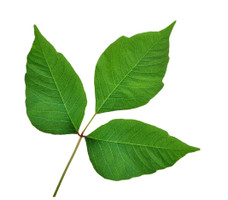Homeopathy for Poison Ivy and Poison Oak
Posted by Dr. Lisa Samet N.D. on Mar 17th 2016
After an unusually warm winter over much of the U.S., poison ivy and poison oak are already making an appearance.
And you know what that can mean… itchy, blistering rashes caused by an oil these plants produce called urushiol. One gets a rash if one is sensitive to the oil and either touches or brushes up against any part of the plant – or touches something that has come into contact with the oil – like a pet, gardening tools or clothing.
The rash that follows contact with the plant is actually an allergic reaction to the oil. Itching – often intense, and blistering eruptions are the most common symptoms – and they can be maddeningly annoying. Swelling of the parts may also occur.
Happily – homeopathy can help bring quick relief.
I have written about this topic in an earlier article – focusing solely on the remedy Rhus toxicodendron (Rhus tox.). Here are two other remedies to consider if you find Rhus tox to be less than helpful.
Anacardium orientale: This homeopathic remedy can be helpful to a person who has not found relief from taking Rhus tox for a rash that is blistering and very itchy. The blisters often discharge a yellowish, transparent liquid, which hardens to a crust in the open air. In the evening, in bed, the patient may experience heat of the skin over the whole body, with burning-itching and irritation, such as arises from much scratching, and after the scratching, the burning increases. The person needing this remedy may feel relief from bathing in very hot water. There is often less swelling observed than one might see when Rhus tox is indicated as well as a bit less restlessness.
Croton tiglium: Another remedy to consider if Rhus tox has not been helpful. This homeopathic remedy is less often called for in these cases but still worthy of some consideration. Patients needing this remedy may notice that their rash is much worse on their face and/or genitals. The right side of the face may actually be affected first. The rash is accompanied bycorrosive itching and is sore when touched or rubbed. The patient may also report a bit of stinging pain with the rash. Itching in these cases may be relieved by scratching. Also - the skin may feel particularly tight.
How to dose:
When you first discover a rash, first dose with either a remedy like WHP Be gone Poison Ivy™ (made from Rhus tox) or take 30C or 200C potency of Rhus toxicodendron - placing one pellet under the tongue or one pellet in water, stirring vigorously and taking teaspoon doses as needed. Always cease dosing when relief begins and only redose if symptoms again worsen.
If you find that Rhus tox does not help after three (3) doses – carefully consider the remedies above.
As with any medical condition, consult with your physician if you have any concerns about the severity of your condition as it may first require medical diagnosis and/or intervention and monitoring.
About Dr. Lisa Samet:
Dr. Lisa Samet N.D. provides Washington Homeopathic Products with a regular column on using homeopathy for the family. She's a naturopathic physician who specializes in homeopathic medicine and she's a partner with Dr. Andre Saine N.D. Dr. Samet graduated from the Southwest College of Naturopathic Medicine in 1998 and has been practicing in Montreal since then. She was born and raised in New York.
Dr. Samet has chosen to focus on homeopathy because in her experience it is the deepest healing modality available in that it does not just soothe or palliate symptoms but can actually stimulate the body to start to heal itself. Dr. Samet sees patients in her Montreal office as well as remotely using Skype. Learn more here: Dr. Lisa Samet

